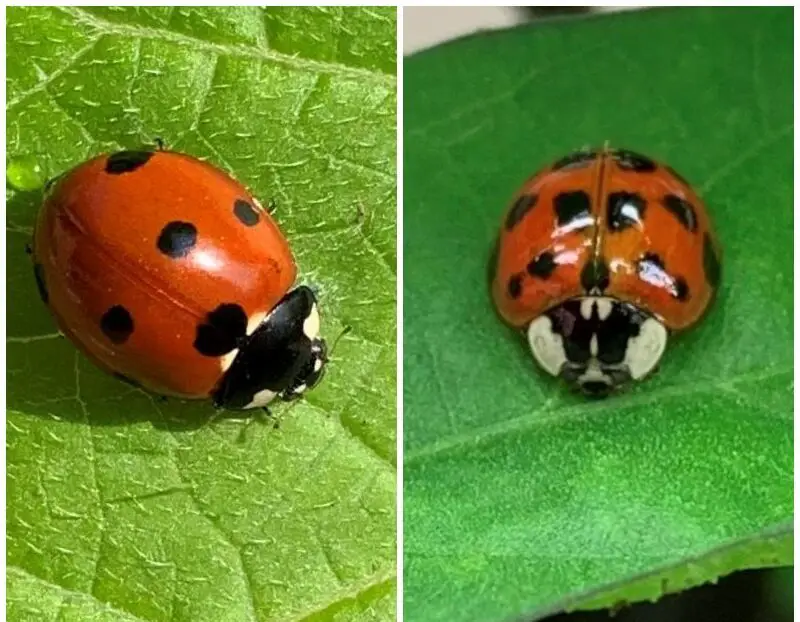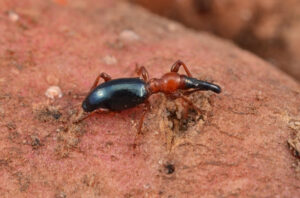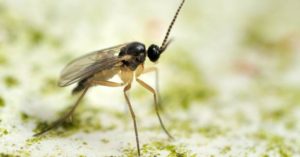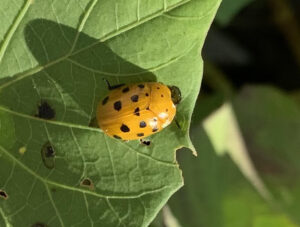Ladybugs are a welcomed sight in the garden. The iconic red and black beetles are not only beautiful, but they are also beneficial because they consume garden pests such as aphids, mealybugs, spider mites, scale insects, and whiteflies, including their eggs and larvae.
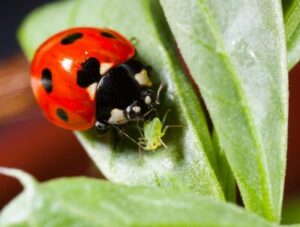
The Asian beetle is another small beetle that is often misidentified as a ladybug. Although it looks very similar in appearance, it has very different behavioral traits.
The look-a-like beetle, a native to eastern Asia, was first introduced to North America in 1916 in an effort to control pests. It was not until 1988 that it was discovered that the imported beetles had grown to problematic proportions. As it turns out, the Asian beetle is an aggressive version of its docile counterpart. It is now considered an invasive species since it has caused several North American ladybug species to decline.
In this article you will learn the similarities and differences between the two beetles so that you can tell them apart.
How to Tell the Difference by Their Appearance
Both ladybugs, or ladybirds as they are also called, and Asian beetles, come in a variety of colors ranging from yellow to orange to red. Both beetles sport black spots although some Asian beetles may not have any. But Asian beetles are slightly larger than ladybugs, and their heads are more pointed.
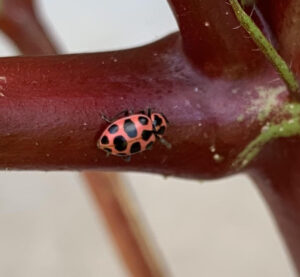
The key difference in their appearance is found on their pronotums, which is the part of the insect that is located just behind their heads. The ladybug’s pronotum is black with two small white spots, one located on each side. On the other hand, the Asian beetle has a white pronotum marked with a black “M” shape (or “W” shape if you are looking from the opposite angle). The “M” shape may vary in size or thickness, but it is always present in Asian beetles.
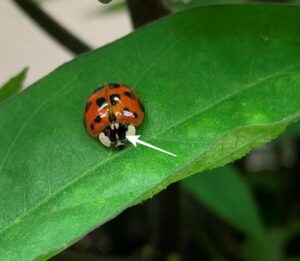
What’s on the Menu?
Both beetles have voracious appetites, devouring aphids, mealybugs, and other sap-sucking insects. They will also eat fruits like grapes, berries, pears, and apples. Asian beetles may also munch on smaller-sized ladybugs.
Loners or Groupies?
You will never find ladybugs congregating in large numbers. Conversely, while you may see a lone Asian beetle, they are more commonly known for congregating in larger numbers. So, if you come across a large group of beetles, they will be the Asian variety.
Overwintering Habits
Both kinds of beetles will seek shelter during the cold months. Ladybugs, also called lady beetles, will always overwinter outdoors. However, Asian beetles seek to overwinter inside homes and other buildings where it is warm. They are attracted to windows and other reflective surfaces, bright lights, and abrupt color changes on building exteriors. For example, dark colored shutters on a light-colored house will catch their eye. When temperatures drop, the invasive beetles will enter homes and other structures through cracks and crevices in walls, door jams, and windowsills, where they will hibernate. Homeowners may be unaware of their presence until spring when temperatures become more moderate, and the swarm of beetles emerges from their hiding place.
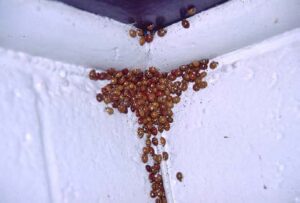
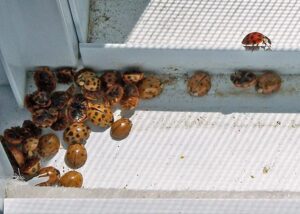
Thankfully, Asian beetles, also known as Asian lady beetles, do not damage property like termites do, but their presence can be bothersome. When they feel threatened, the beetles may release a foul-smelling yellow substance from their leg joints. The release is called “reflex bleeding.” The substance may cause a mild allergic reaction in some people, especially if there is an infestation. It may also stain walls, fabric, and other surfaces where the pests have landed.
A Threat to Pets
Although it is somewhat rare, if pets (dogs in particular) try to eat the Asian beetles, the insects may become lodged in their mouths, causing a burning sensation. A veterinarian may have to manually remove the beetles.
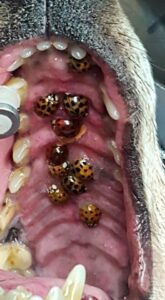
It is possible that, if ingested in larger numbers, the toxins released by the beetles can result in ulcerations of the gastrointestinal tract.
Do Ladybugs and Asian Beetles Bite?
Another way to tell the difference between ladybugs and Asian beetles is by their aggression. Ladybugs do not bite, but Asian beetles will “bite” you by scraping or pinching your skin.
While it is true that both ladybugs and Asian beetles help control pests in the garden, the latter can also create quite a problem, especially if they congregate in large numbers. Now you know how to tell the difference between the two.
Thank you for reading this article! If you found it helpful, please consider sharing it with others via email and social media!
